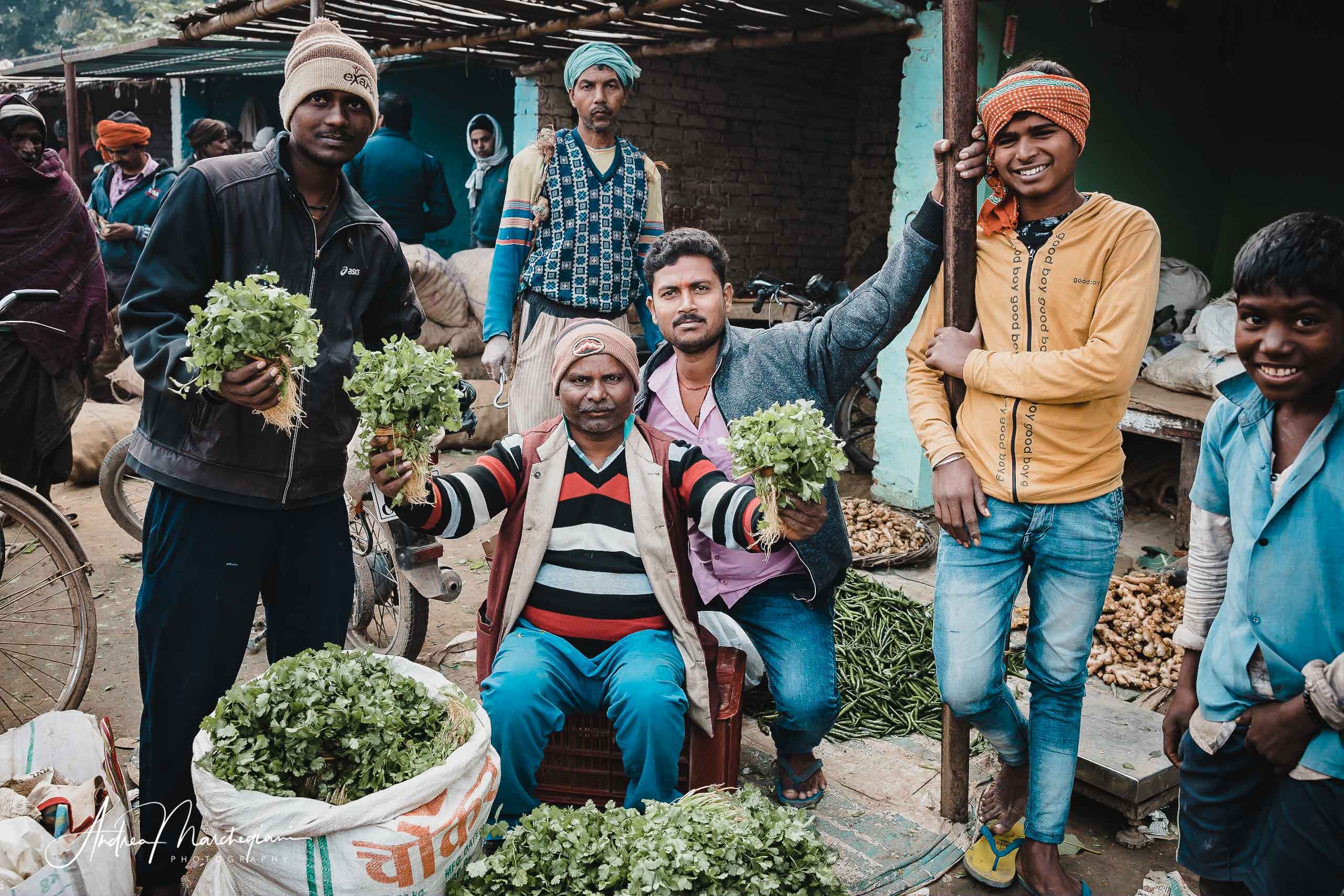
- Home
- Photo Galleries
- Portrait Photography
- Landscape Photography
- Street Photography
- China
- Ethiopia
- India
- Holy Ganges
- Varanasi
- Varanasi Ganga Aarti
- Varanasi, Manikarnika Ghat
- Varanasi Streets & Alleys
- Varanasi Demolition
- Varanasi Fruit Market
- Sarnath
- Brick Kilns
- Tamil Nadu, Chennai & Mamallapuram
- Tamil Nadu, Fort Tirumayam & Madurai
- Tamil Nadu, Tiruvannamalai & Thanjavur
- Kerala, Munnar
- Kerala, Peryiar
- Kerala, Backwaters
- Kerala, Kochi
- Kazakhstan
- Myanmar
- Senegal
- Uzbekistan
- Travel Blog
- China
- Ethiopia
- India
- Tamil Nadu & Kerala
- Varanasi
- Whato to do in Varanasi
- Varanasi Life along the Ghats
- Varanasi Death along the Ghats
- Varanasi Ganga Aarti Ceremony
- Varanasi demolished to honor Shiva
- Varanasi Fruit Market
- “Varanasi, A Journey into the Infinite”
- Sarnath
- All about River Ganges
- Holy Shit. All about Indian Cow Dung
- Clean India Project
- Brick factories
- Tilaka, pundra, bindi: what is the mark on Indian foreheads?
- Kazakhstan
- Mongolia
- Ulaanbaatar, the coldest capital in the world
- What to do in Ulaanbaatar
- Chinggis Khan Museum, 6 floors of Mongolian history
- Gorkhi-Terelj National Park and Bodgkhan Natural Reserve
- Altai Mountains, Things to do in Olgii and Sagsai
- Living with the Eagle Hunters
- Sagsai Eagle Festival
- Navrus Festival
- Xöömej, Mongolian throat singing
- Mongolian Food
- Myanmar
- Senegal
- Uzbekistan
- Latest Posts
- Photography Blog
- About
- Prints
Brick factories, the dark side of the Indian economic boom
“The future of humanity is largely at stake in India, because the majority of the young people who will inherit this planet are being born to Indian mothers.”
– Federico Rampini
Share with your friends:
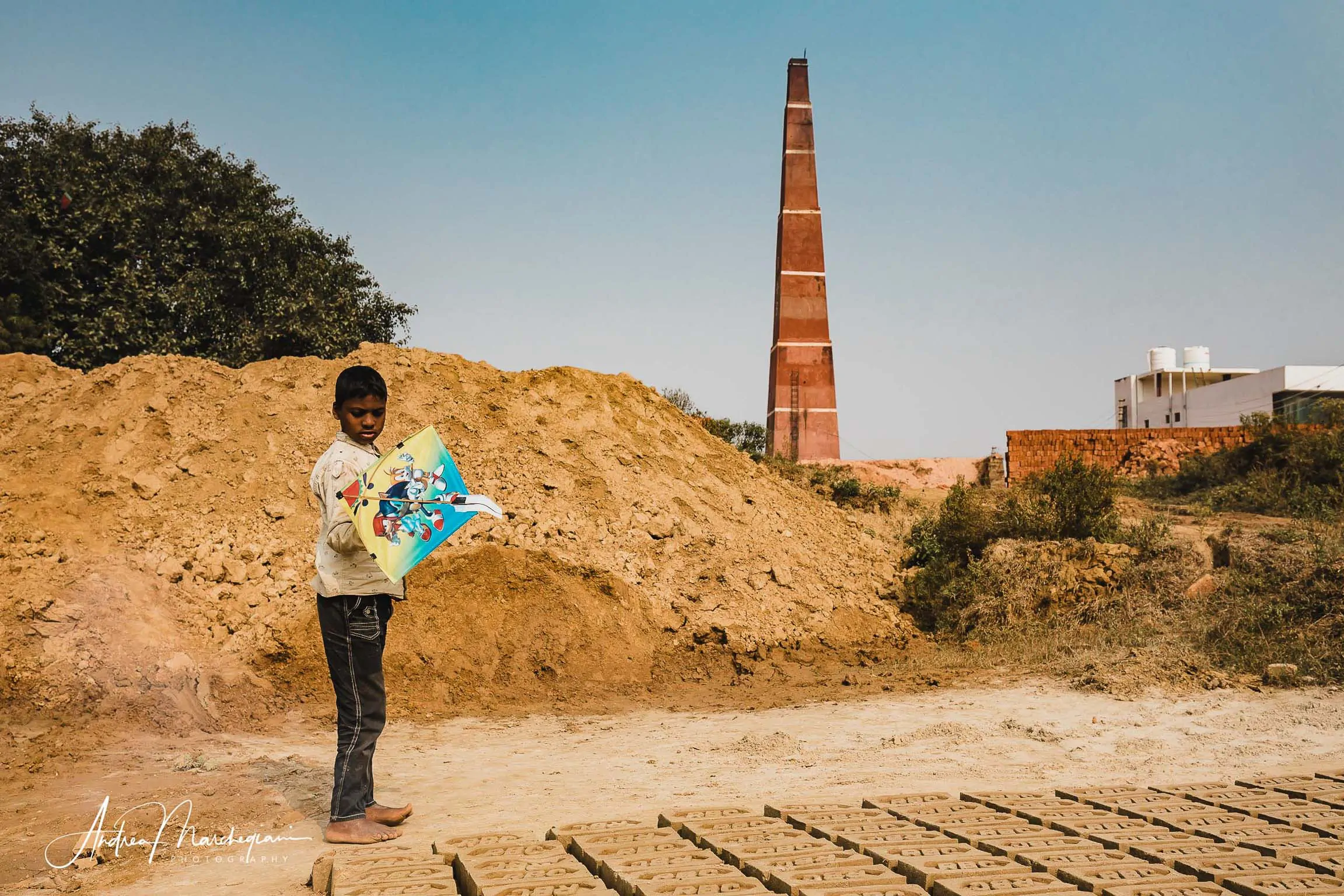
Indian economic boom and exploitation
“Incredible India!” says the slogan of the Indian Tourism Board. I read it on every billboard since my arrival in the country. It may seem like an exaggerated statement but, data in hand, you can really say that India is incredible.
In recent decades, in fact, India has rosen not as fast as China, but as much consistently. It is estimated that every year 1% of the population has emerged from the stranglehold of poverty, with the result that more than 200 million people have stopped suffering from hunger.
By 2025, India will undermine the US and become the second engine of the global economy (China remains the first). By 2025, India will become the most populous country in the world, kicking China off the podium.
I think about this as I visit two brick factories, one in the far north, one in the far south of the Indian subcontinent. The work is still manual and the labor is definitely underpaid.
Since the early 2000s, several international scandals have shaken Indian brick factories. In addition to the negative impact on the environment produced by coal furnaces, the main concern is the working conditions in the factories.
In 2017, a documentary by Anti Slavery International focused on working conditions bordering on slavery. 96% of brick makers receive a sum of money on loan whem they are hired, and then have to work an entire season to redeem the debt. However, the daily wage, working hours and interest on the debt are not written down so the factory owner can appply them discretionarily.
The result is that the promised pay almost never coincides with the actual pay; you end up working without knowing if and when your work will repay the debt initially contracted. Those who try to rebel or escape suffer violent repression.
To make matters worse, children under 14 years old are heavily exploited, forced to work up to 9 hours a day, even in the middle of summer. In India, there are more than 100,000 brick factories that provide employment for over 23 million workers – this is the scale of the phenomenon.
Travelling has taught me that the whole world is a country. It would be naive, for my part, to label this horrendous reality as a “third world plague”. Even in Italy, unfortunately, similar phenomena survive: we live in a democracy among the most advanced in the world, and yet we can not sweep away the phenomenon of the capolarato, though it involves an infinitely more limited geographical area than the large Indian spaces.
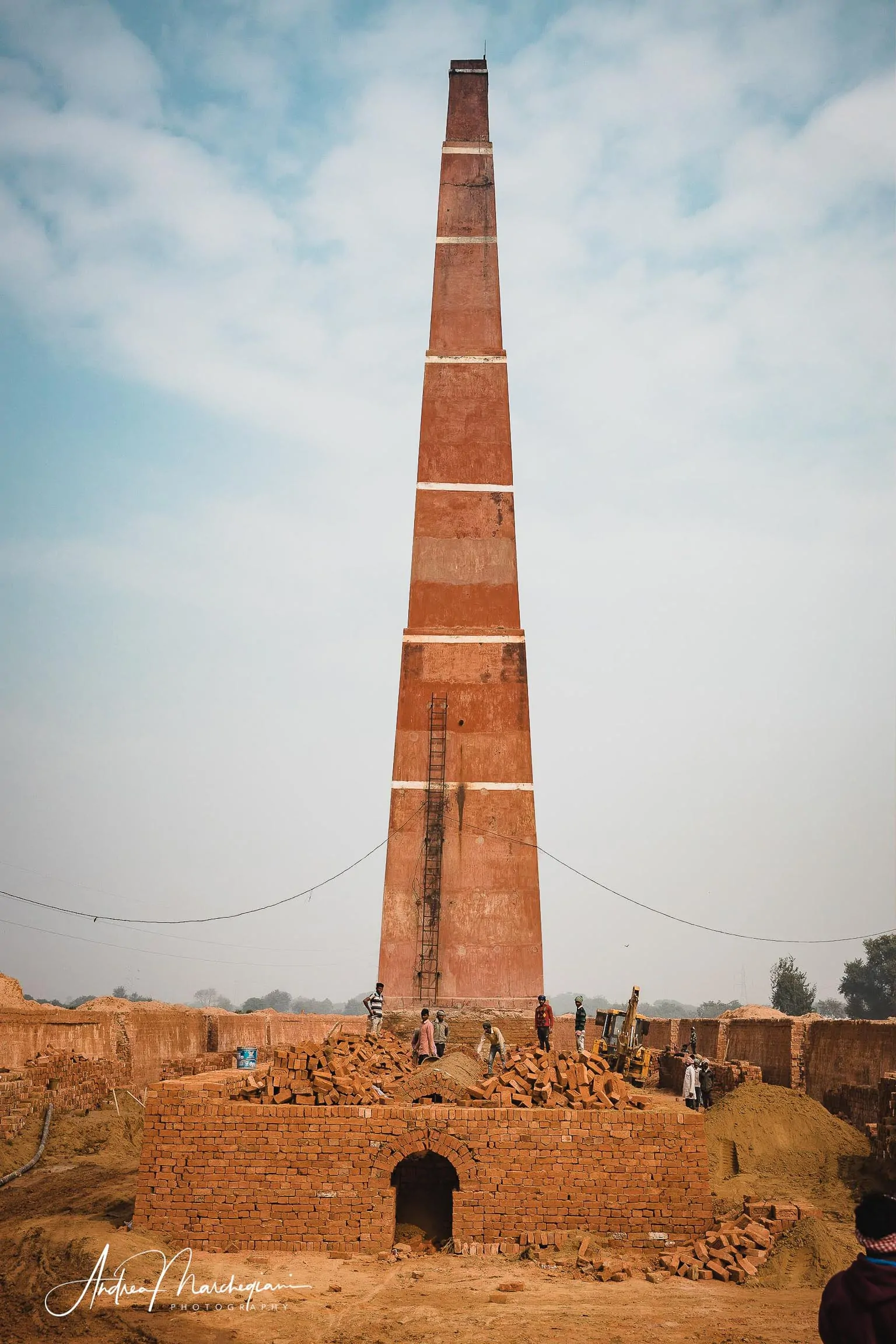
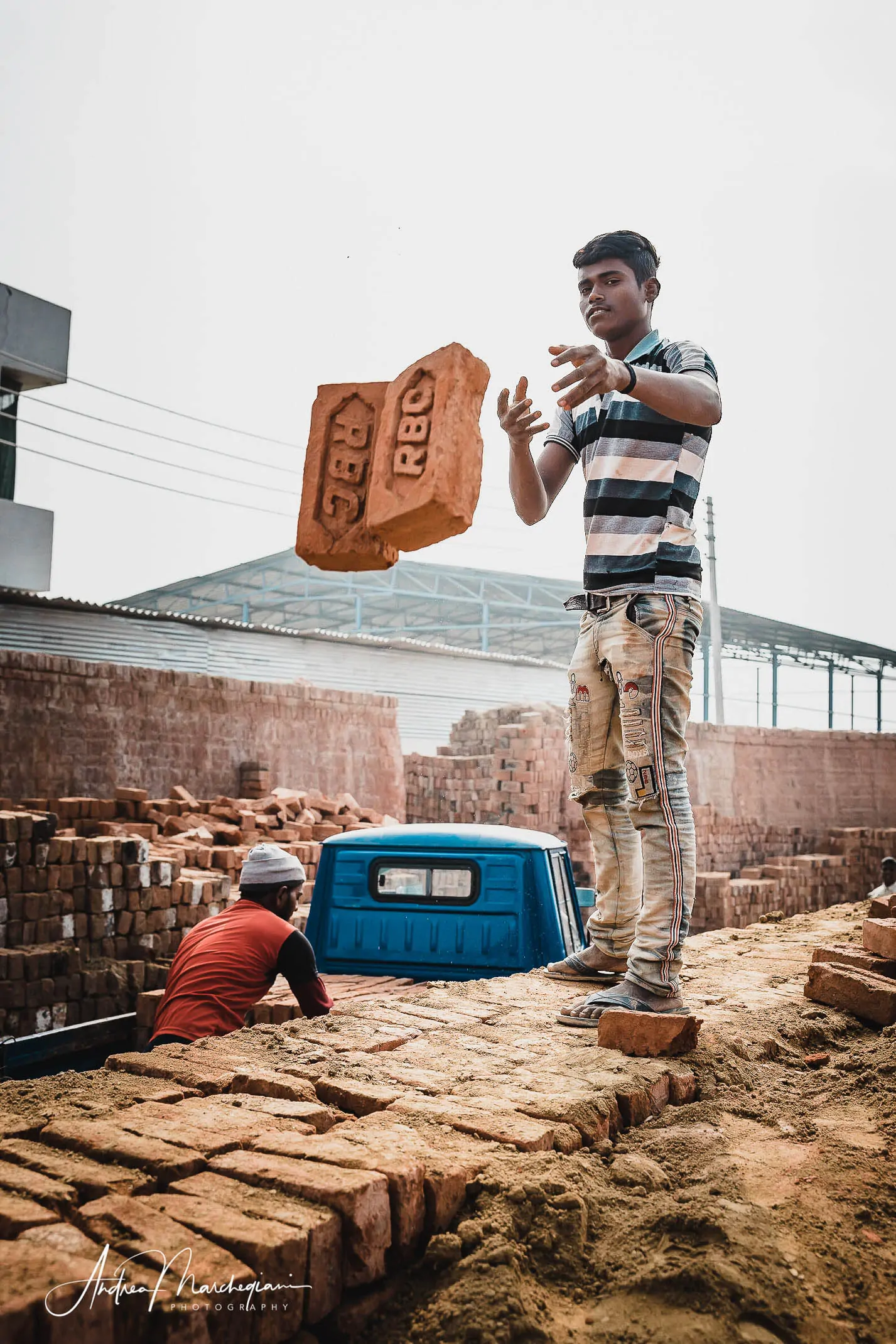
Chaubepur brick factory
Chaubepur brick factory is about 23 km north of Varanasi. The building stands isolated against expanses of unspoilt countryside.
Upon my arrival, the farmers who live in the surrounding area approach intrigued and greet me with affection. In contrast to the distrust I have found in several former European colonies, e.g. In Senegal, Indians seem to have left the past behind. Wherever I go, they welcome me with great openness.
Federico Rampini wrote that “India is the only large country to have been under a long colonial yoke without maintaining resentment towards its former English masters, nor hostility against the West in general.” You really want to wish them the best.
I walk along a long avenue and access to the heart of the factory. They are building a new furnace, using the old bricks as filling material.
The situation I face is much more relaxed than I imagined. Boys and men work together, joking and laughing with me. There are no children at work. A gentleman approaches and asks me if I am taking photographs on behalf of the Indian government. He also recommend visiting the nearby village, which ensures me to be very interesting. Children with curious faces and elderly people peep from the small huts of bushes, built in the middle of open spaces where cows and barnyard animals rest. A dirt road serves as a main road and connects all the huts.
It’s a long way from our concept of an industrial area, but that’s actually what it is. I photograph a few villagers, asking permission first, and soon a small crowd gathers around me. They look at me so happily that I am filled with joy. How intense are the eyes of India!
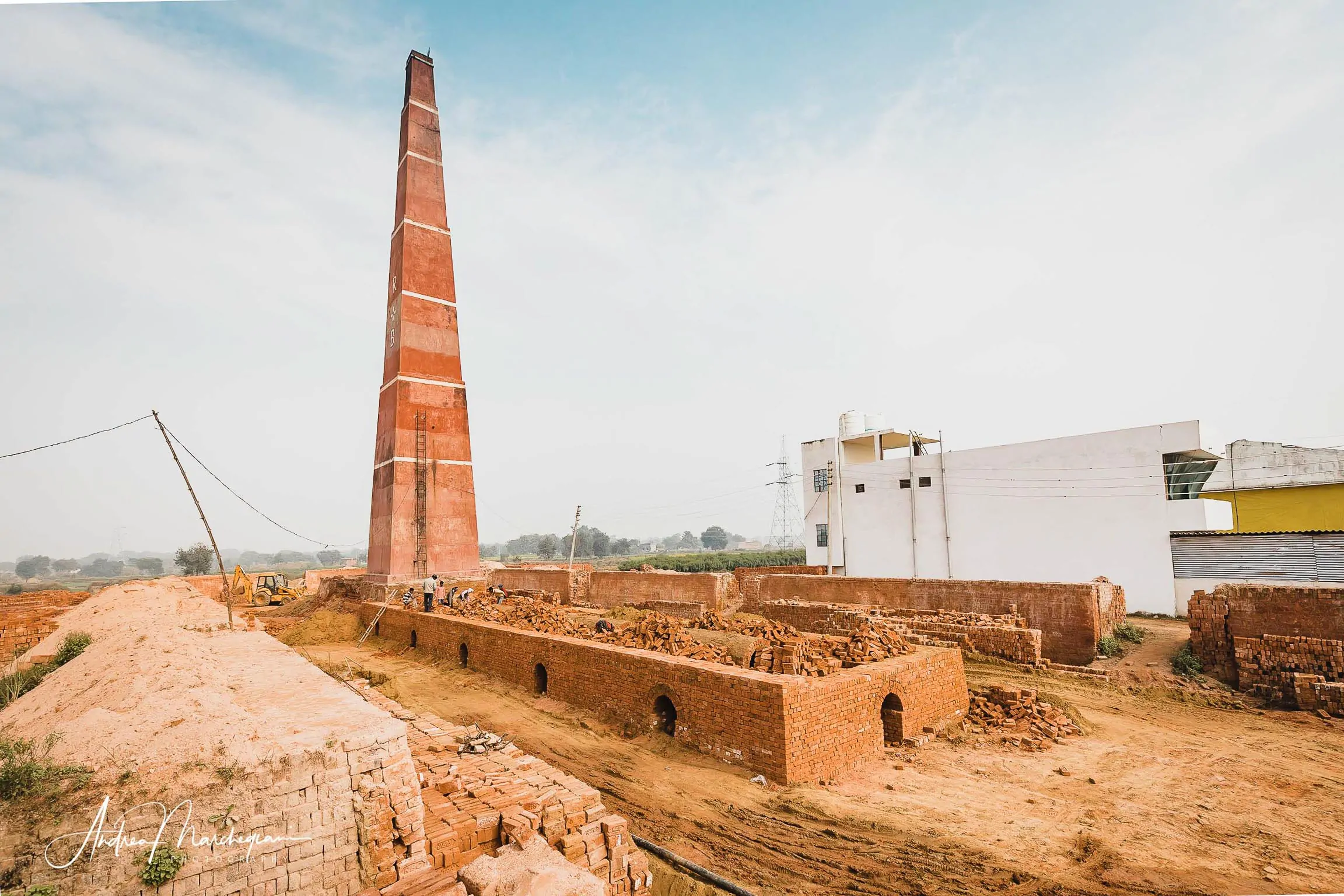
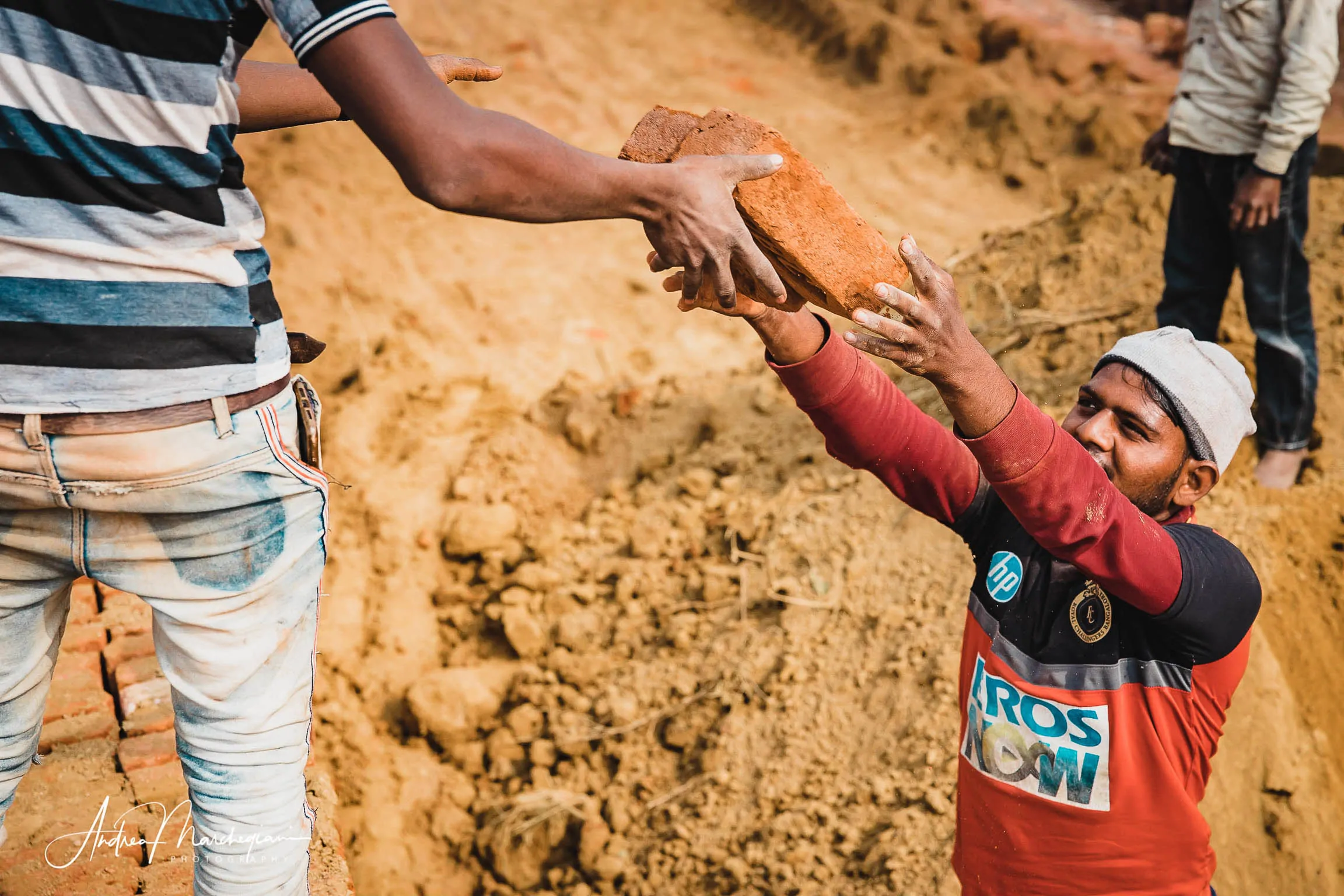
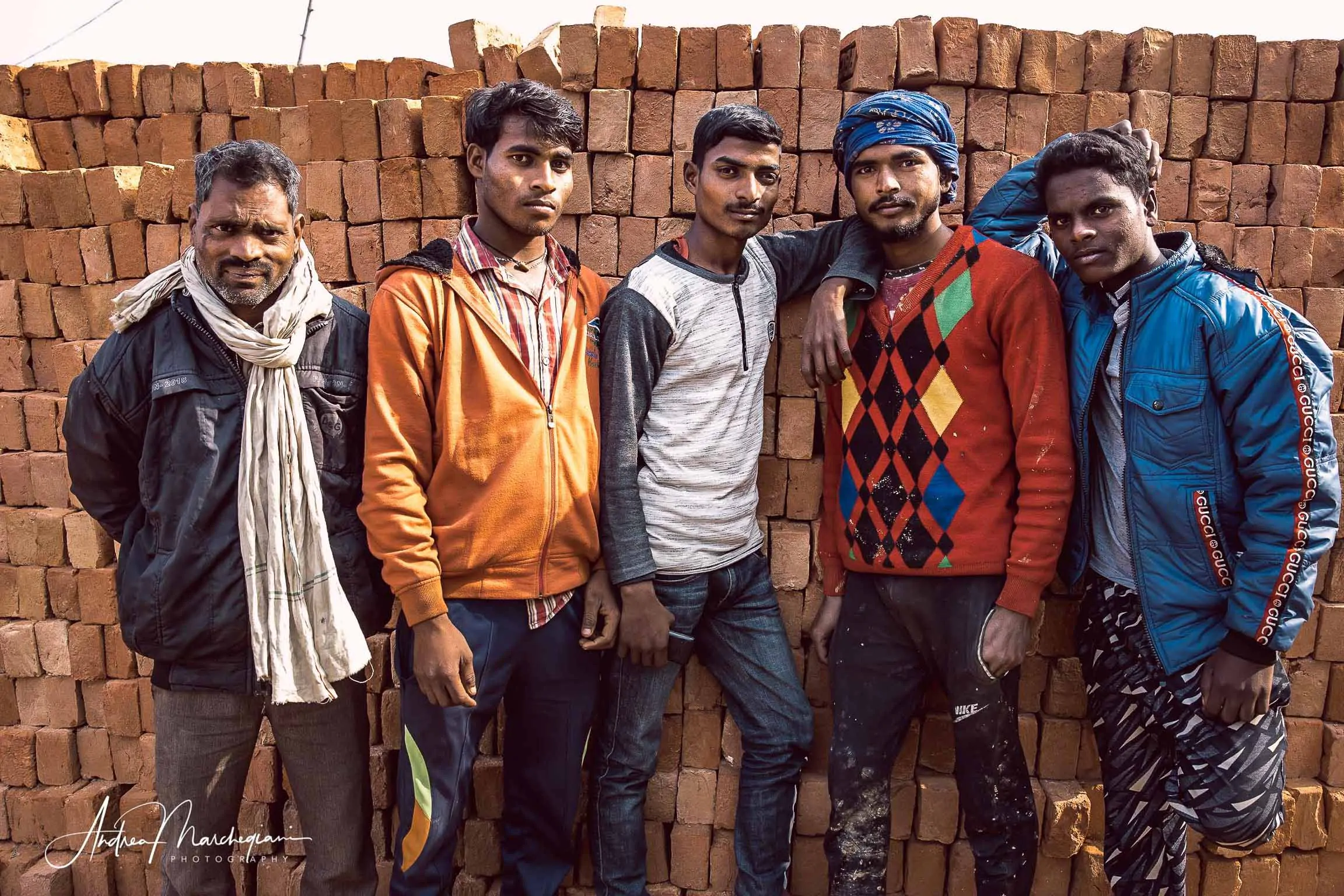

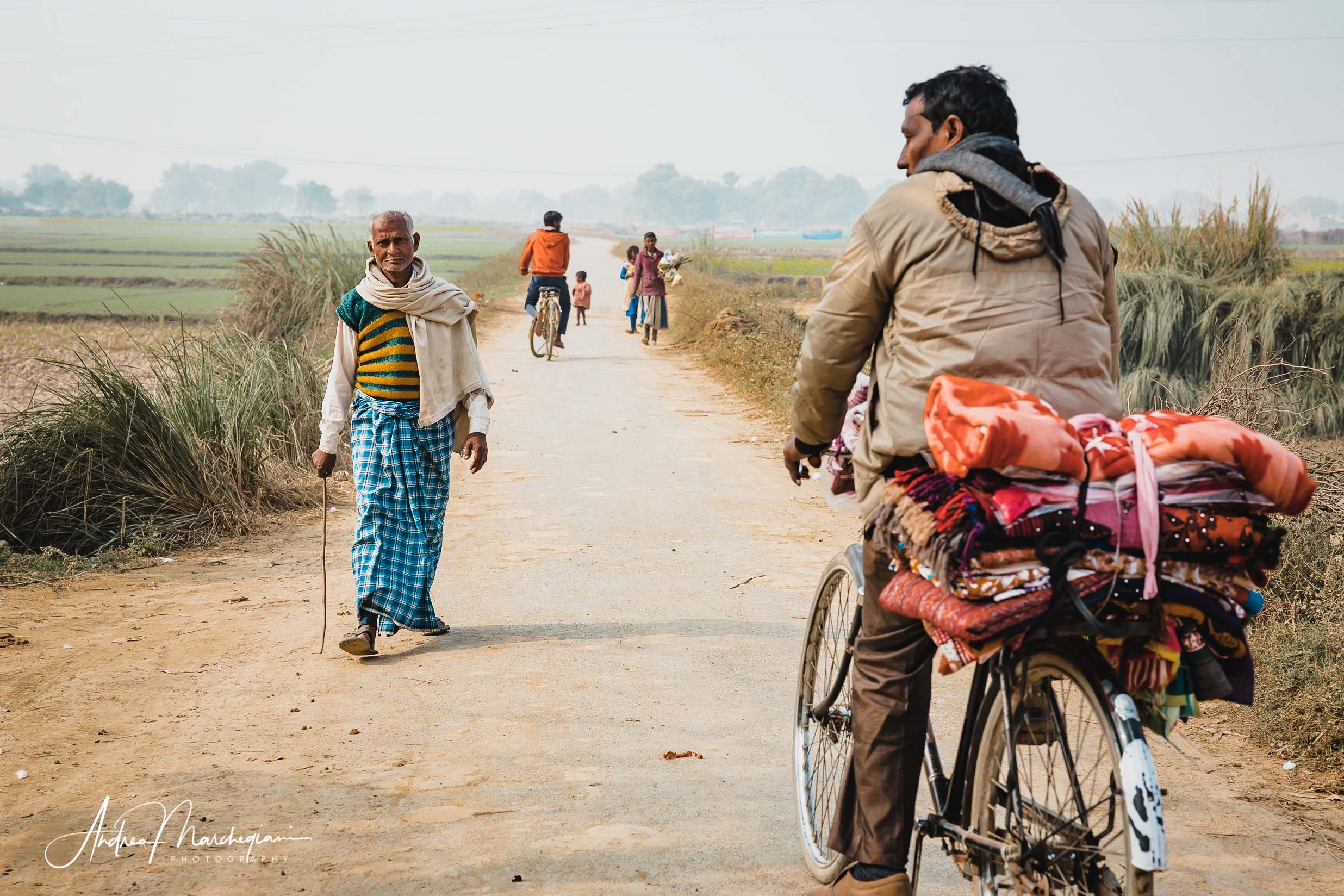
At the end of the visit, something unexpected happens. Prakash, the guide who contacted the factory and drove me here, improvised a picnic. “Andrea, you have to try my chicken curry,” he says. He invites me to sit in a dirt road in front of the factory and asks me to wait while he prepares the meal. Eventually, along with the chicken, I eat bread baked in dried cow dung, a traditional method of making charcoal!
Usilampatti brick factory
I visit the Usilampatti factory a week later. This is an idea of Pandyan, my guide through the temples of Tamil Nadu. Here I can finally see how bricks are shaped. It’s lunch time when we stop and the workers are on break. It’s really hot in South India, even in January, the sun burns the skin like a burning iron. A woman offers to show me how she does her job. A man spills a wheelbarrow of mud at her feet and runs to shelter under the shadow of a canopy.
With her rough and strong hands, the woman kneads the mud and places it inside wooden moulds; then she signs the upper side with the factory stamp. She lifts the mold and repeats the procedure. Around us, thousands of bricks are drying in the sun. Many have crumbled under their own weight, with a considerable amount of waste. Nevertheless, a small factory can produce around 16,000 bricks a day.
There is no production without waste, nor economic boom without social contradictions.
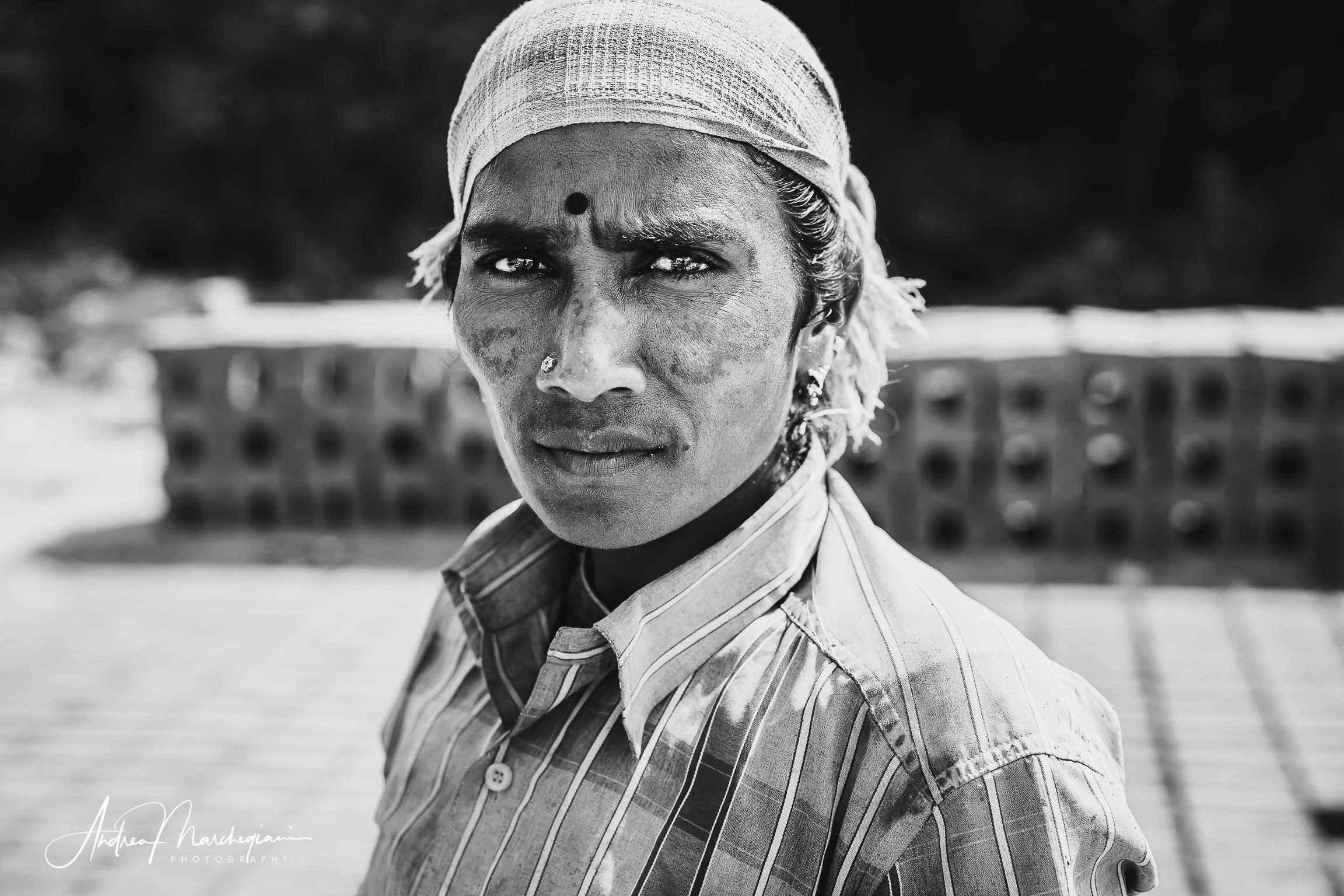
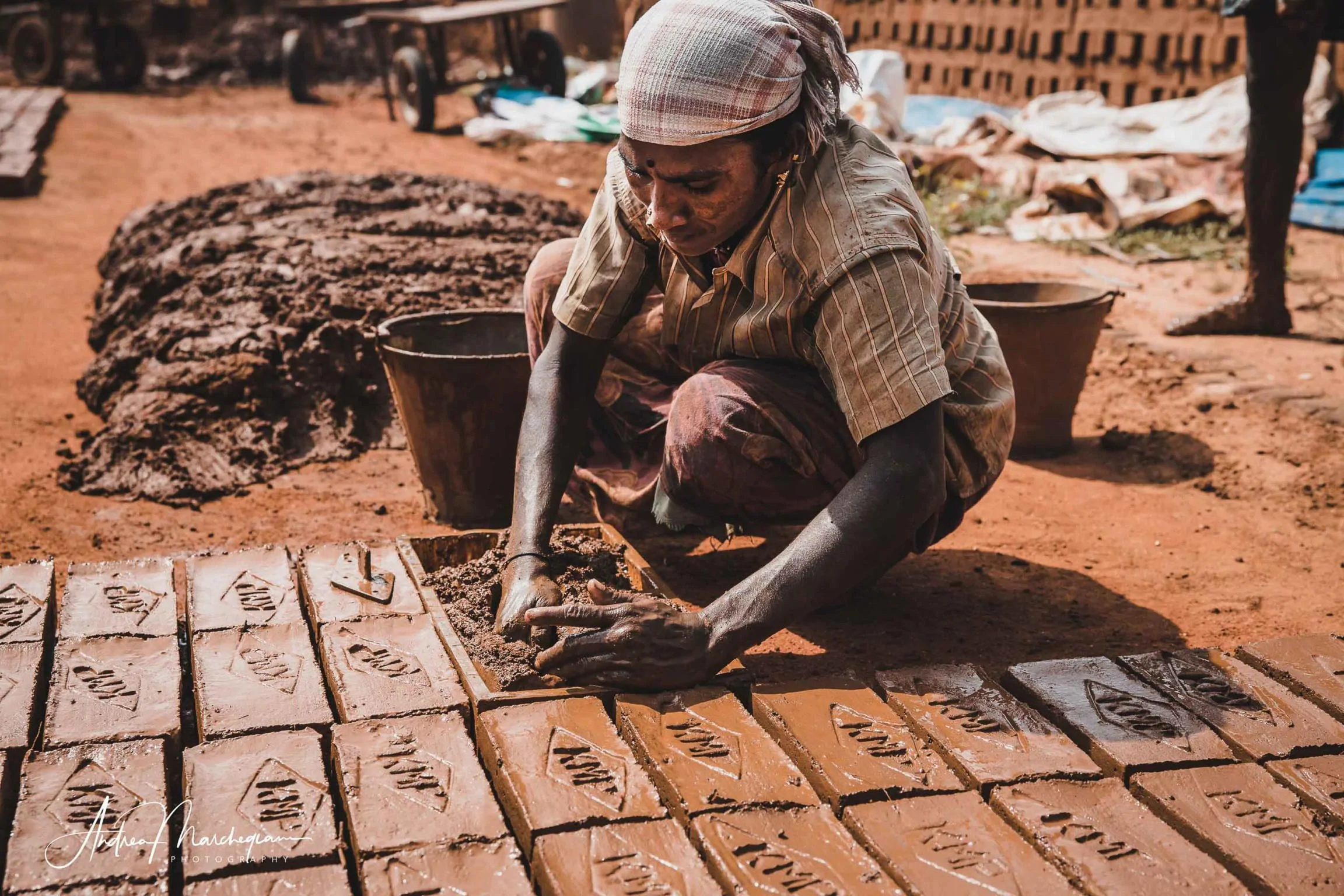
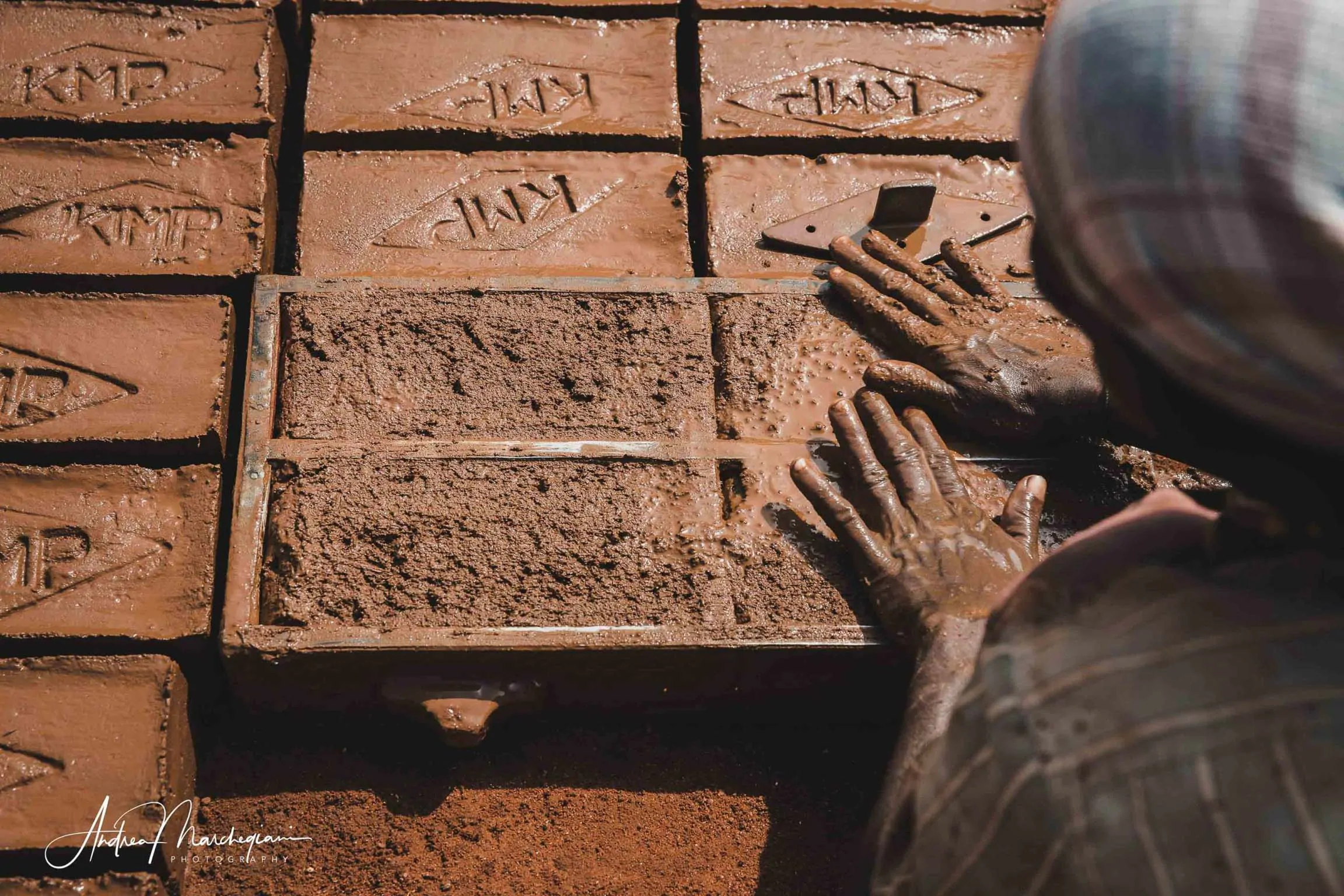
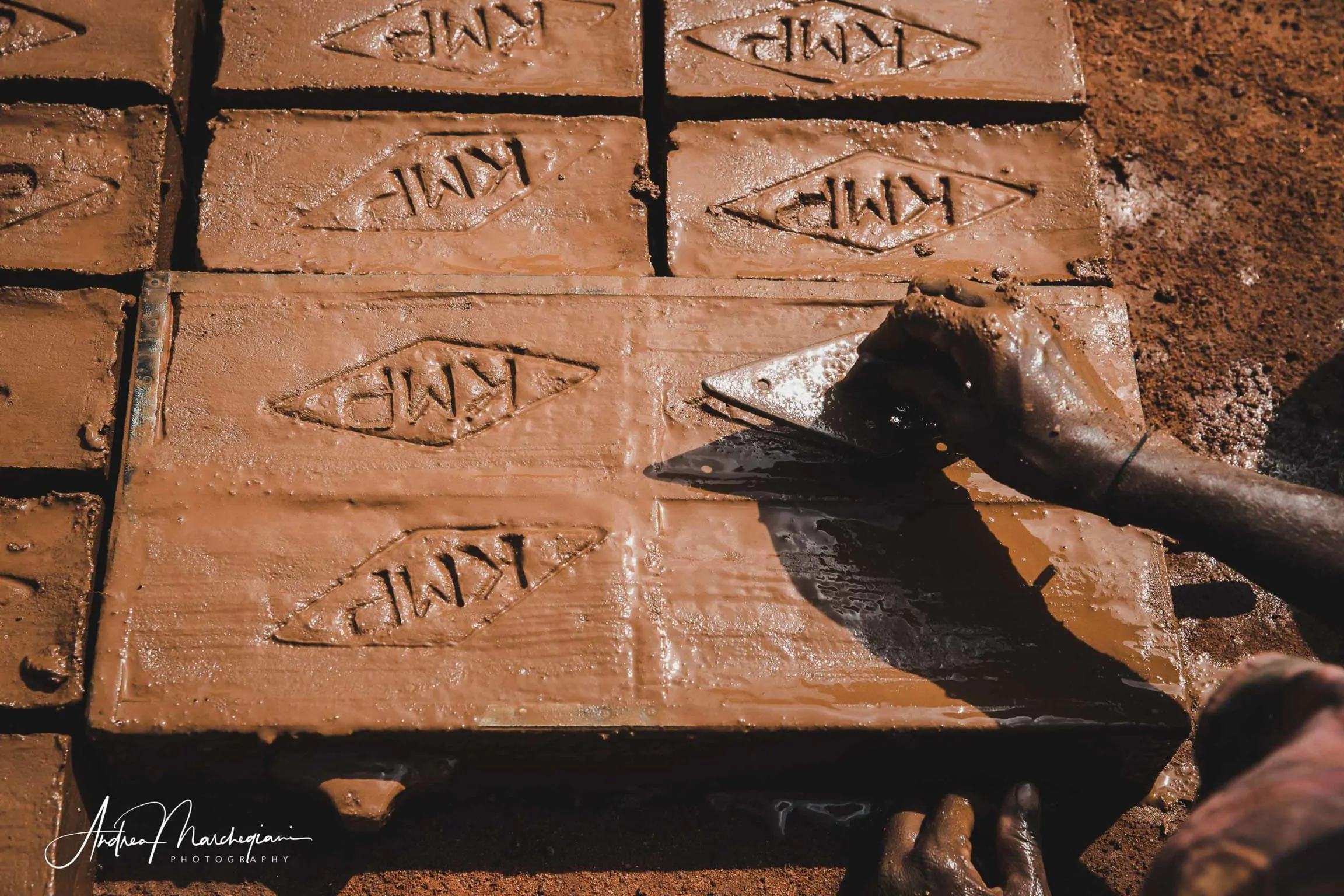
Share with your friends:
More from India Travel Blog
Leave A Reply Cancel reply
This site uses Akismet to reduce spam. Learn how your comment data is processed.



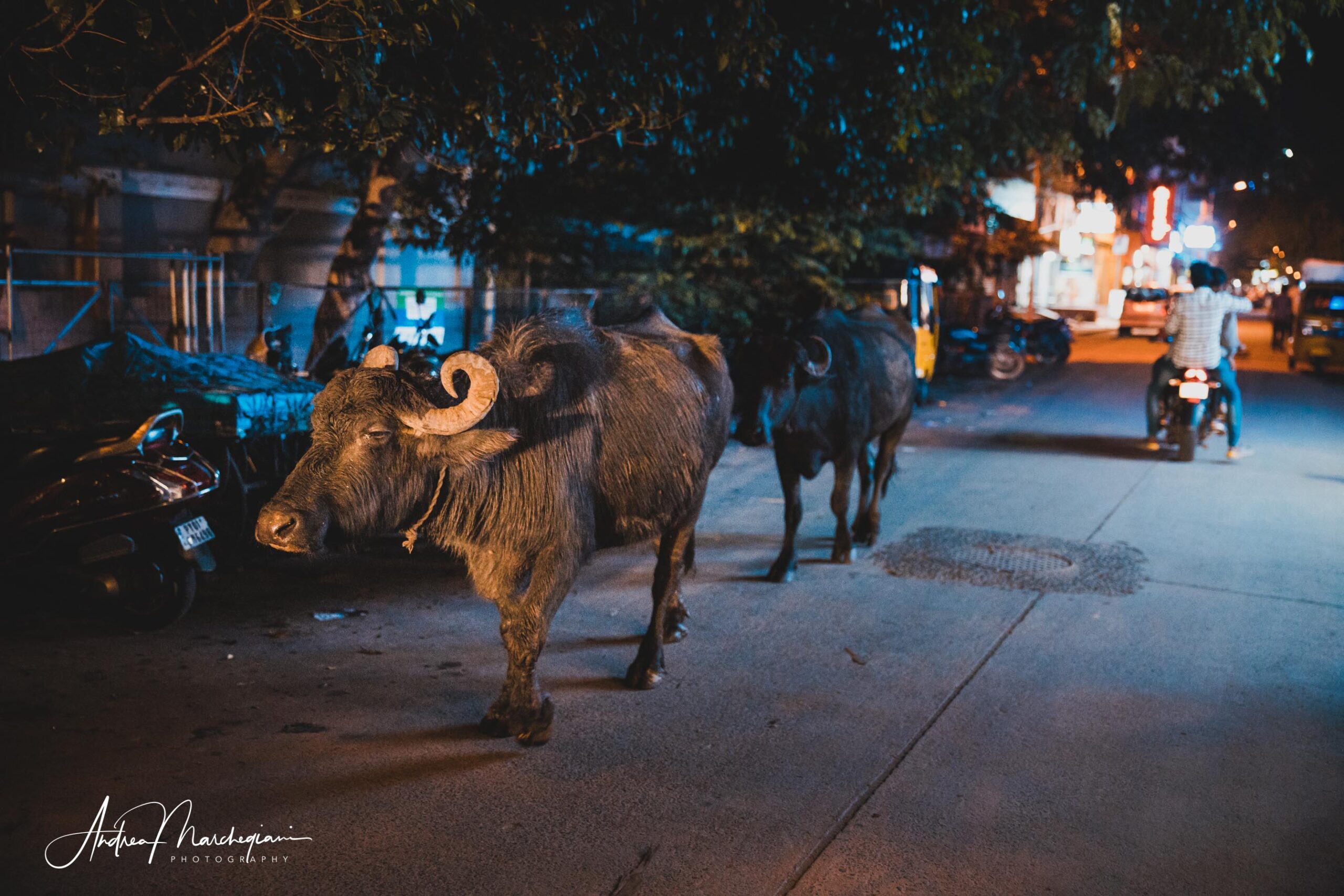
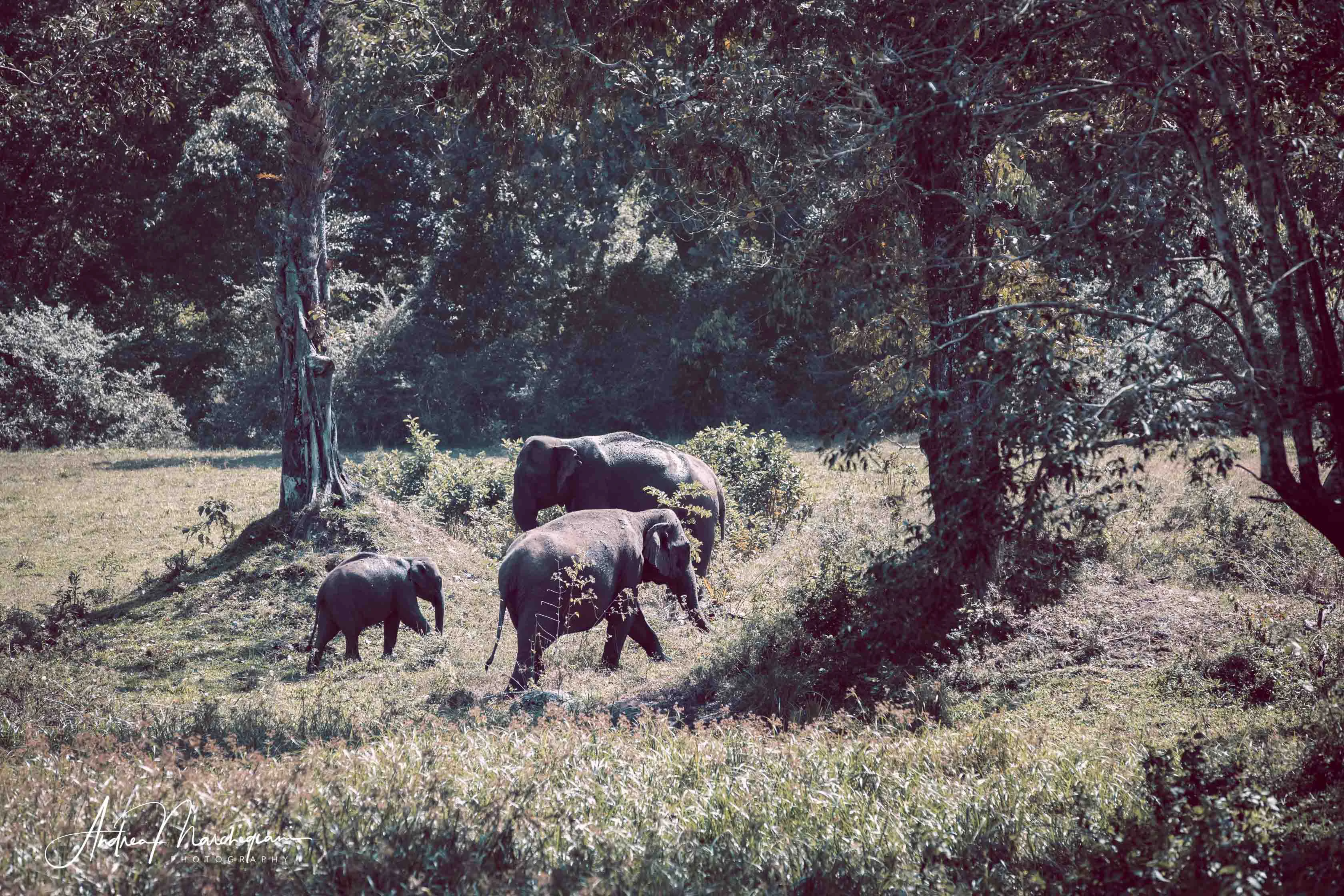













2 Comments
well, we’re a couple months off from 2025 and India hasn’t quite dethroned the US in economy yet. especially when you consider GDP per Capita..
You are right. It is currently the fifth biggest economy and is expected to be the second in three decades. What can I say, things change every other day. But still, isn’t India incredible?